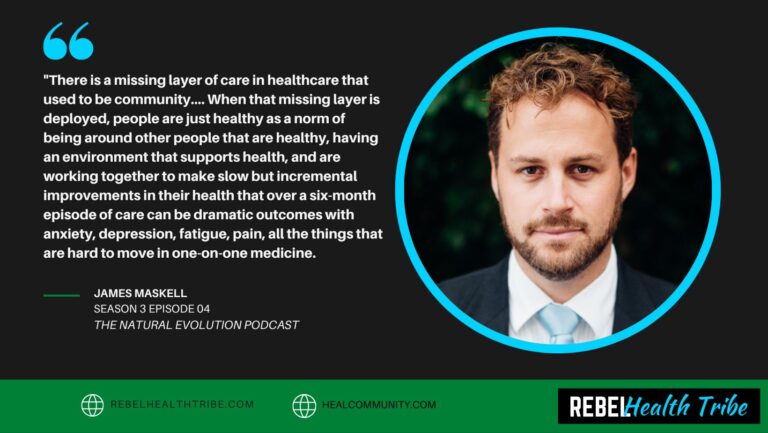
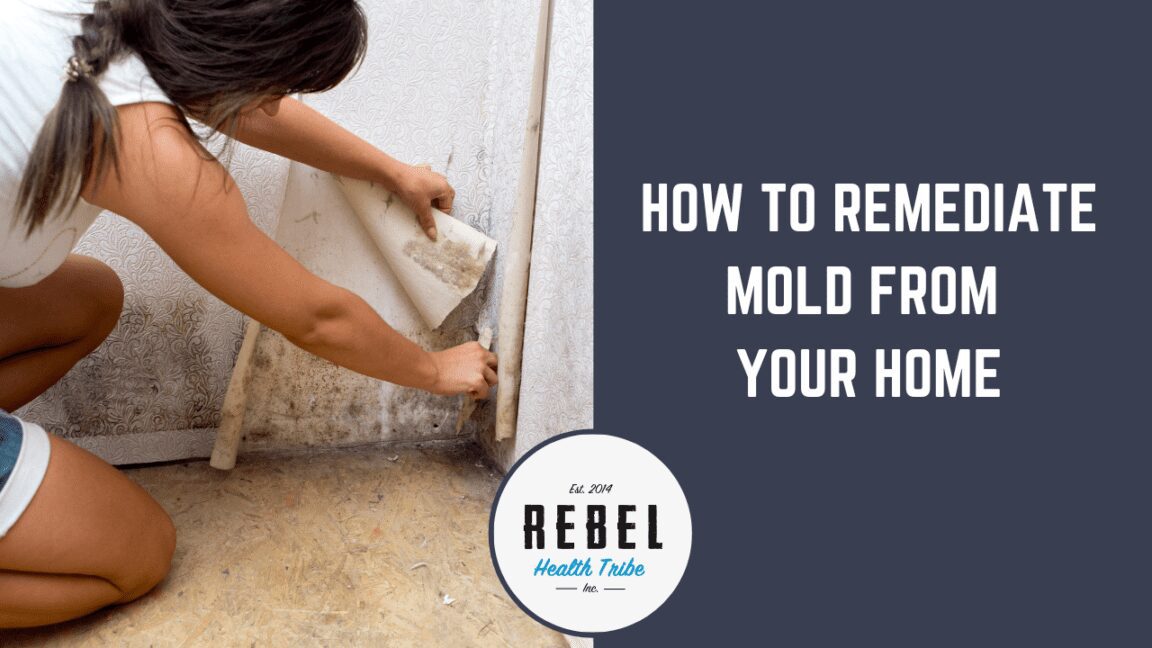
More Posts from
Toxicity & Detox Support
Sign Up & Receive the So You Think You Have Mold, Now What? PDF
Sign up with your name & email to receive the So You Think You Have Mold, Now What? PDF along with any future updates, content, and mold-related offers from RHT & Cathy Cooke!
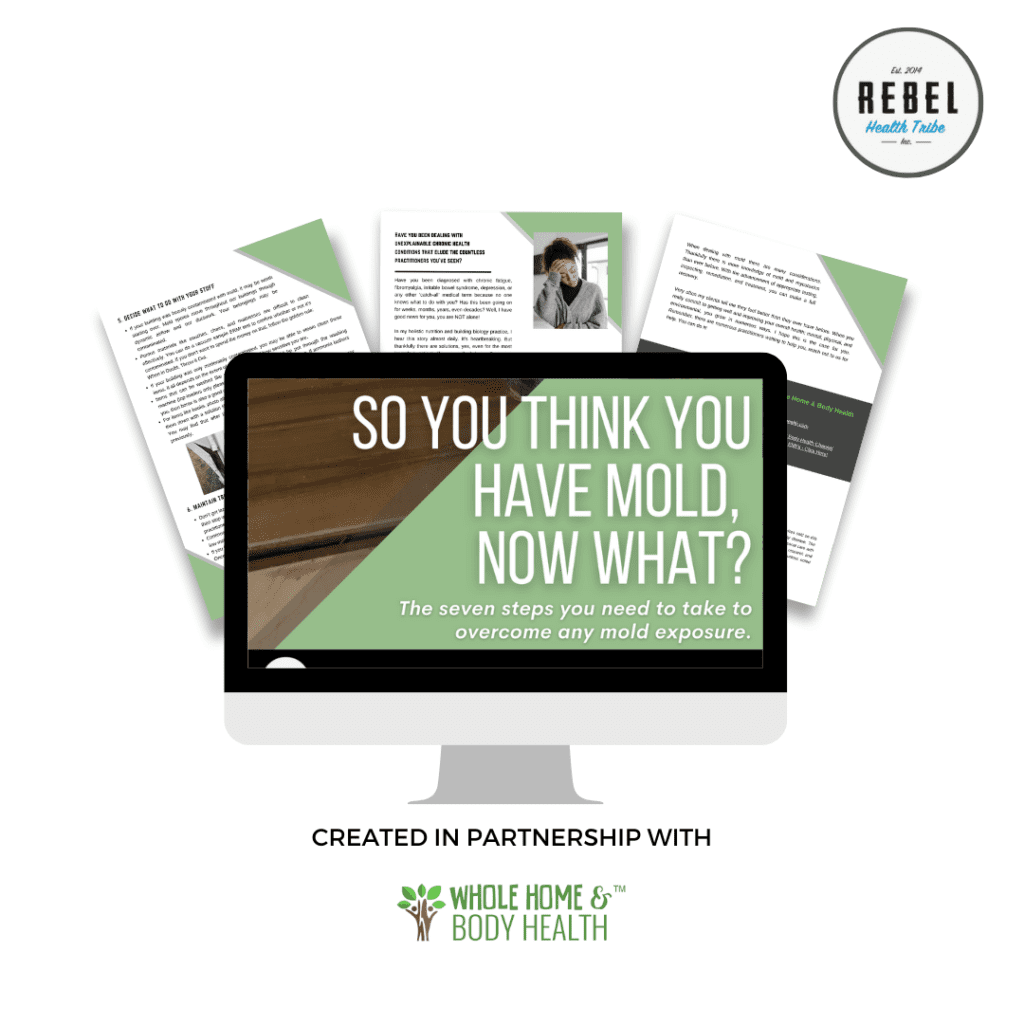
How to Remediate Mold From Your Home
So you found mold in your home (or office, or car). Now what do you do? Maybe this seems like a silly question, I mean you just clean it up right? Pour some bleach on it? Wipe it off? Paint over it? Have you ever done any of these? …be honest!
The truth is that most of us probably have. We have because that’s what we’ve been taught to do. It seems reasonable. I mean if you can’t see it, then it doesn’t exist, right? Oh if life were that easy, but we all know by now that sticking our heads in the sand does not work. And if this is true for anything in life, it’s especially true for mold.
Regardless of what the internet (or your landlord) might tell you, you can NOT just wipe the mold away and be done with it. If you want to learn how to properly clean mold from your home, then you need to understand the basics of how mold grows.
Mold is Microscopic
If you can see visible mold, then there are millions of spores present. The spores grow in colonies; consisting of hyphae and roots that run deep. These roots grow deep into the surface that it’s growing on. So if you just wipe away the visible part you can see, you have done nothing to the roots. They are usually still there, still growing and consuming the dust, drywall, paper, wood, or whatever organic material it’s using for food. Simply painting over the area does not stop the growth either.
But what about bleach you’re asking? I mean bleach kills everything right? Many people, including your landlord, and millions of people on the internet, think this is a great solution. And to be fair, most people I know have tried it. But here’s the inconvenient truth, using bleach on mold is the worst thing you can possibly do. I can hear your gasps of shame and horror! Don’t beat yourself up about it, we live and learn, right?
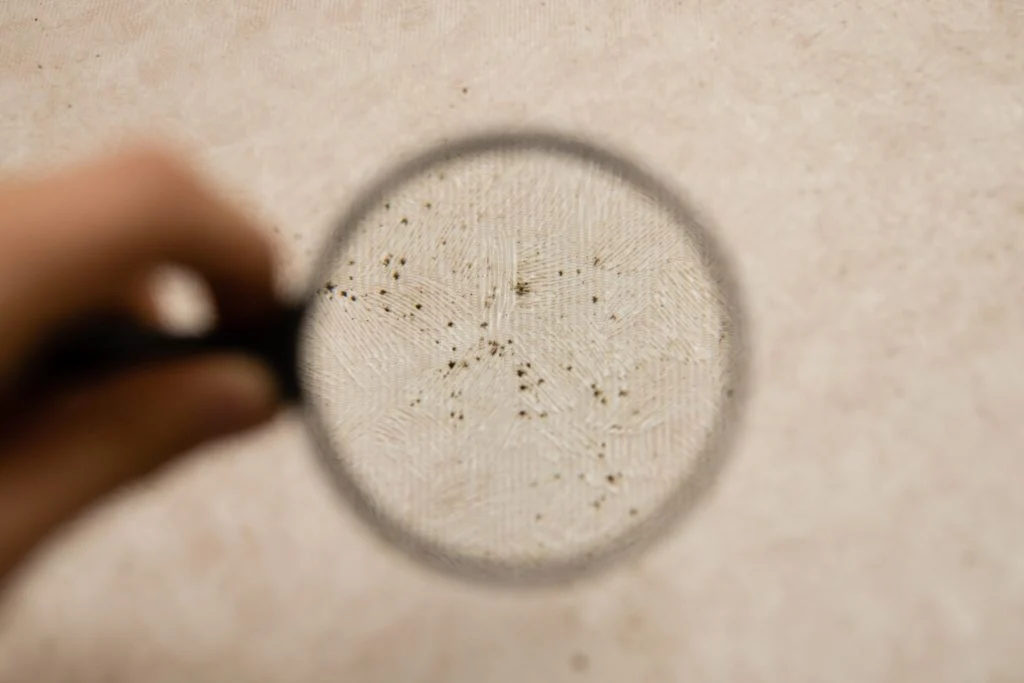
Bleach seems effective to us because it bleaches what we can see, and we already learned that if we can’t see it, it doesn’t exist right? No. Just no. The color of the spores may be gone because we bleached it, but those roots are still there. In fact, bleach is mostly water, and that water will get deep down into the roots and actually feed them, exactly what we don’t want to happen. If you learn just one thing from this post, do not use bleach on mold, no matter what your landlord or boss may tell you.

Sign Up & Receive the So You Think You Have Mold, Now What? PDF
Sign up with your name & email to receive the So You Think You Have Mold, Now What? PDF along with any future updates, content, and mold-related offers from RHT and Cathy Cooke!
So if painting, bleaching, or simply cleaning doesn’t solve the problem, what are you supposed to do? The simple answer is that you must physically remove the mold. That means cutting out the affected building materials and a minimum of two feet past the impacted area. Because of the complex nature of mold and how it grows, there is simply no other way. You can’t kill it, seal it, bleach it or paint over it, it must be removed. End of story. It’s a pretty straightforward fact, though there are several other considerations to make sure your mold remediation is effective.
(*Note: in some situations, if the mold is very superficial, you can wash it off the surface with a brush and hot soapy water; but when in doubt, have it checked out. There could be more of a problem hiding under the surface.)
Because the presence of mold can cause significant health issues, the remediation process must be done with extreme care and thoroughness. There are a few areas you need to focus on to successfully remediate mold.
Focus on The Source – Water
The first area is to stop the water. Just like with an illness, we don’t simply take a pill to mask the symptoms, we want to actually fix the underlying cause of the problem. It’s the same for mold. We must fix the underlying cause. Mold does not grow in the absence of water. The only reason mold grows at all, is because water is somewhere it shouldn’t be. The most common reasons are due to plumbing leaks, condensation, and penetrations in the building envelope.
You must stop the source of the water to stop the problem. This may be something you can do yourself if the source is obvious, say a small leak under the sink. But in many cases, the source is not obvious, or you may have multiple sources (very common) and you’ll want to hire an experienced mold inspector to help you find all the sources. If you’re dealing with challenging health issues, I strongly recommend this. A good inspector will check every inch of your home, including the attic, crawl space, outside perimeter, and all living spaces. They will also use tools like an infrared camera, moisture meter, or borescope to confirm or deny the presence of moisture or microbial growth. An experienced professional will know exactly what to look for and how to find the hidden sources that many inspectors may miss. Finding all the sources is critically important. Just like with your health, there is usually more than one thing going on.
Beginning the Remediation Process
After all the sources have been identified, you can move on to the actual mold remediation. Technically, anyone can perform a ‘mold remediation, and there are a whole lot of ‘fly-by-night’ companies out there that do so. But performing remediation well is another thing entirely. The proper execution of mold removal is a surprisingly complex process. Strict adherence to a well-developed remediation plan is critical to prevent cross-contamination of other areas of the building. This involves setting up a containment barrier for all affected areas, using negative air pressure to draw air to the outside of the building, using HEPA vacuums and air scrubbers, strict adherence to PPE protocols for employees, and a decontamination area for workers coming in and out of the containment area.
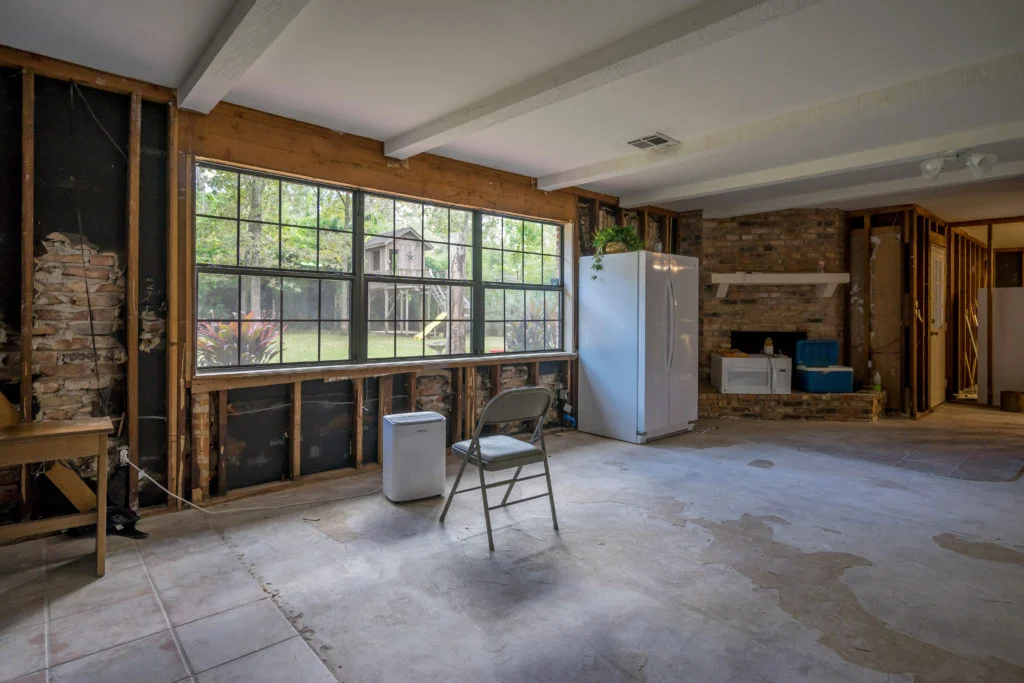
About now you might be picturing a scene from a post-apocalyptic movie dealing with a highly infectious agent – that would be pretty accurate. This all might seem like overkill for some teeny-tiny mold spores, but remember that the mycotoxins they emit are like a gas and can travel nearly anywhere when allowed to. Because the affected building materials must be physically removed, they will invariably be disturbed, releasing the toxins into the air. This creates an increased exposure risk for both the workers and other parts of the building.
After proper containment is employed, all water-damaged building materials must be physically removed. The materials should be double-bagged and cleaned before removing from the contained area. Any building materials that cannot be removed must be manually cleaned to remove all microbial growth. This usually means studs, sill plates, or anything structural. This is where I see most remediation fail.
The large majority of companies use a chemical or spray for this step. There is a lot of wishful thinking in the industry that spraying a chemical, encapsulate or enzyme on the mold-stained areas will magically make the mold go away. It does not. Let me repeat that: spraying mold with a chemical does not kill or remove the mold. Instead, the workers should be manually cleaning the mold via brushing, sanding, or soda blasting. When I am overseeing a remediation project, these criteria are clearly laid out in the contract. If these steps are not followed (and they often are not) then the remediation fails and the company must do it again, at their own expense.

Post-Remediation Cleaning
Once the remediation is completed properly, you can move on to post-remediation cleaning. This step is a lot more complex than you’d expect. Great care must be taken to ensure that the containment area is as clean as possible before it is taken down to prevent cross-contamination. This involves HEPA vacuuming, at least two passes with single-use disposable wipes on all surfaces, followed by a third pass with a dry microfiber cloth and double bagging of all materials used for the cleaning and containment. After the cleaning and removal of all contained areas is complete, then a final cleaning of all other areas of the building must be done to capture any possible cross-contamination.
The Rebuild Phase
After the entire home (office/area) is cleaned, you’re ready for the rebuild. Technically this is not part of the remediation process, but I’ve included it here for clarity. After the water-damaged materials have been removed and all surfaces cleaned, you now have open walls, floors, ceilings, or unfinished areas of your home. Now you need to find a craftsman to put everything back together. Some remediation companies provide this service, while others do not. You may need to hire a separate company for this step. The area must also pass what we call ‘post-clearance’ air and direct samples to confirm the absence of mold.
The Key to Avoiding Mold Exposure: Prevention
Once you have completed the rebuild phase – after remediating and cleaning – you can work on putting everything back together. The final area of focus to avoid the time consuming process of remediation is prevention. As we all know that prevention is the key to maintaining a healthy body, it is also the key to maintaining a healthy house. Keeping your home free from dust (one of mold’s favorite food), practicing good ventilation, checking your home for signs of water regularly, getting the ducts cleaned every 2 years, using exhaust fans regularly, and keeping condensation and moisture at bay are all critical steps to help avoid microbial growth. The basic strategy here is to keep moisture OUT of your home.
And there you have it, the 5 steps you must follow to properly remediate your home for mold. If any of these are not done, the remediation will not be successful. And trust me, remediations fail all the time. If you find yourself in a situation where you need to remediate your home, I strongly suggest you work with a 3rd party to oversee the process. A building biologist like myself, or another qualified professional in your area is a great person to have involved in the process. They will make sure the remediation company is meeting all of these criteria, and successfully removing ALL sources of water damage and microbial growth. They will also ensure an adequate fine particle cleaning is done which will actually reduce the mycotoxins and mold spores that your home has been exposed to. When you don’t have independent oversight, it’s almost guaranteed some of these steps will be missed unless you’re working with an exceptional remediation company.
Remediating your home can be a frustrating and complex process, but it is necessary. I encourage you not to rush or skip any steps for the sake of time. You want to get it right the first time to ensure the best outcome for all occupants. You’ll be glad you did!

Contact Cathy at Whole Home & Body Health
Call: 970-485-5092
Email: cathy@wholehomeandbodyhealth.com
YouTube Channel: Whole Home and Body Health
Download: Top 10 Guide for Reducing EMF’s – Click Here!
Feeling overwhelmed with all this information?
Join her Environmental Illness & Sensitivity Group to get support.
Sign Up & Receive the So You Think You Have Mold, Now What? PDF
Sign up with your name & email to receive the So You Think You Have Mold, Now What? PDF along with any future updates, content, and mold-related offers from RHT and Cathy Cooke!
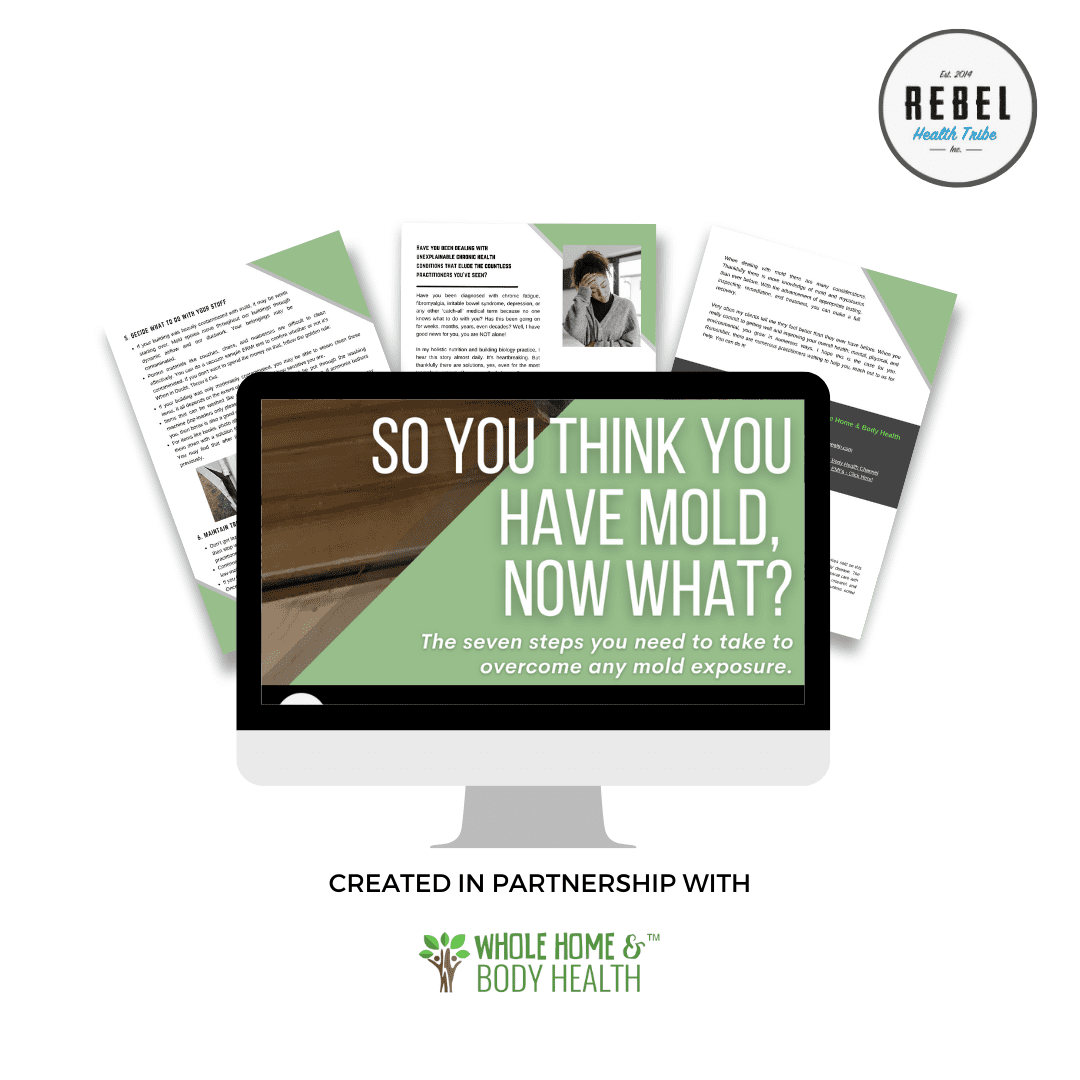
Sign Up & Receive the So You Think You Have Mold, Now What? PDF
Sign up with your name & email to receive the So You Think You Have Mold, Now What? PDF along with any future updates, content, and mold-related offers from RHT & Cathy Cooke!

Toxicity & Detox Support Products
Get Social
Recent Podcasts
Recent Courses
Build Your Resilient Gut
An Exclusive Course with 10 Years of Microbiome
Kiran’s Professional Training Vault
If you’ve ever wanted all of Kiran’s best
Toxicity & Detoxification Masterclass 2024
The toxicity and Detoxification Masterclass covers a wide
Brain & Nervous System Masterclass 2024
19 Leading Experts Share Cutting-Edge Science, Effective Practices,
Autoimmune Masterclass 2024
Autoimmune Masterclass brings together 17 of the world’s
Get the RHT Newsletter

Genetics and Hormone Production, Transport, Utilization, and Metabolism
Our genetics play a larger role in our hormones than most people think. Obviously, diet, lifestyle, and environment are the

Genetics & Neurotransmitters: Impact on Your Mood, Energy, Hormones, and More!
Have you wondered why an antidepressant didn’t work for you? Have you ever wondered where your anxiety is coming from

Genetics and Detoxification: Your genes are key to knowing what detox protocol will best suit your body.
https://vimeo.com/821487331 If you’ve ever bought a detox kit off a shelf or felt considerably worse while doing a detox,

An Introduction to Functional Genomics: Know Your Genetics and Make Informed Personal Health Decisions
https://vimeo.com/821487068 The desire to know how your genes are affecting your health is rapidly growing. Many people are getting genetic







